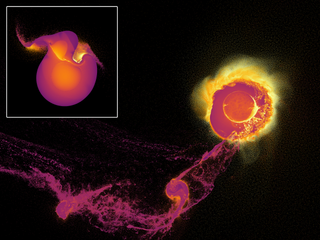Dell, Nvidia win supercomputing contract with top UK universities
Durham and Cambridge universities are building high-performance facilities for cutting-edge scientific research

Dell’s PowerEdge servers will power new supercomputers to help researchers at Cambridge and Durham universities investigate the universe’s biggest questions.
The move is part of a deal with the Distributed Research utilising Advanced Computing (DiRAC) project, which operates as a distributed computing network with deployments across the UK, including at the two universities.
The company's technology will help the project in its quest to solve some of the universe’s biggest mysteries, including the nature of dark matter and understanding the basic building blocks of galaxies and solar systems.
The University of Cambridge has been kitted out with over 400 PowerEdge C6520 servers, complete with the recently announced 3rd Gen Intel Xeon Scalable processors, for use in its Cambridge Service for Data Driven Discovery (CSD3) system.
CSD3 will also deploy over 80 PowerEdge XE8545 servers which are configured with 3rd Generation AMD Epyc processors and Nvidia A100 Tensor Core GPUs with NVLink, which it claims creates a powerhouse of a system capable of AI and advanced computing workloads.
With the current PowerEdge servers, the CDS3 system is predicted to deliver four petaflops of application performance to advance research across astrophysics, nuclear fusion power generation, and lifesaving medical applications.

IT Pro 20/20: Meet the companies leaving the office for good
The 15th issue of IT Pro 20/20 looks at the nature of operating a business in 2021
At Durham University’s Institute for Computational Cosmology (ICC), the COSMA8 supercomputer is set to fully deploy in October 2021 with over 90 PowerEdge C6525 servers.
Get the ITPro. daily newsletter
Receive our latest news, industry updates, featured resources and more. Sign up today to receive our FREE report on AI cyber crime & security - newly updated for 2024.
The supercomputer will be equipped with both 2nd and 3rd Generation AMD Epyc processors, liquid cooling, and Nvidia's HDR InfiniBand networking. This will be used to deliver the power for the university’s research into dark energy, black holes, and how the universe was formed.
The university also plans to expand the system to over 600 compute nodes over the next year and address the challenges of exascale computing to accelerate time to discovery and innovation.
Last month, the Kao data centre in Harlow released the first images of its Cambridge-1 supercomputer. Nvidia announced it would build the machine last year, just after its planned acquisition of Arm was confirmed.
The 400-petaflop supercomputer is set to be used in medical research by a range of companies including AstraZeneca, GSK, and NHS organisations.
Zach Marzouk is a former ITPro, CloudPro, and ChannelPro staff writer, covering topics like security, privacy, worker rights, and startups, primarily in the Asia Pacific and the US regions. Zach joined ITPro in 2017 where he was introduced to the world of B2B technology as a junior staff writer, before he returned to Argentina in 2018, working in communications and as a copywriter. In 2021, he made his way back to ITPro as a staff writer during the pandemic, before joining the world of freelance in 2022.





